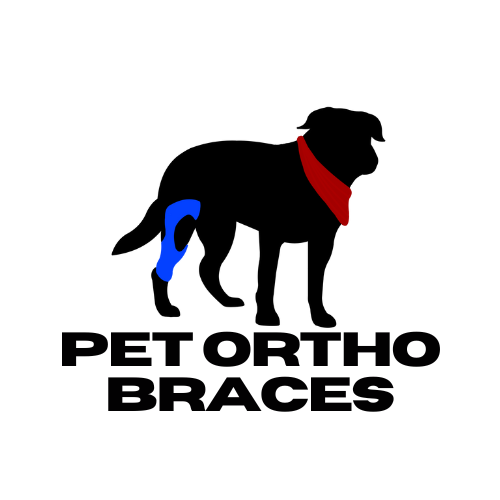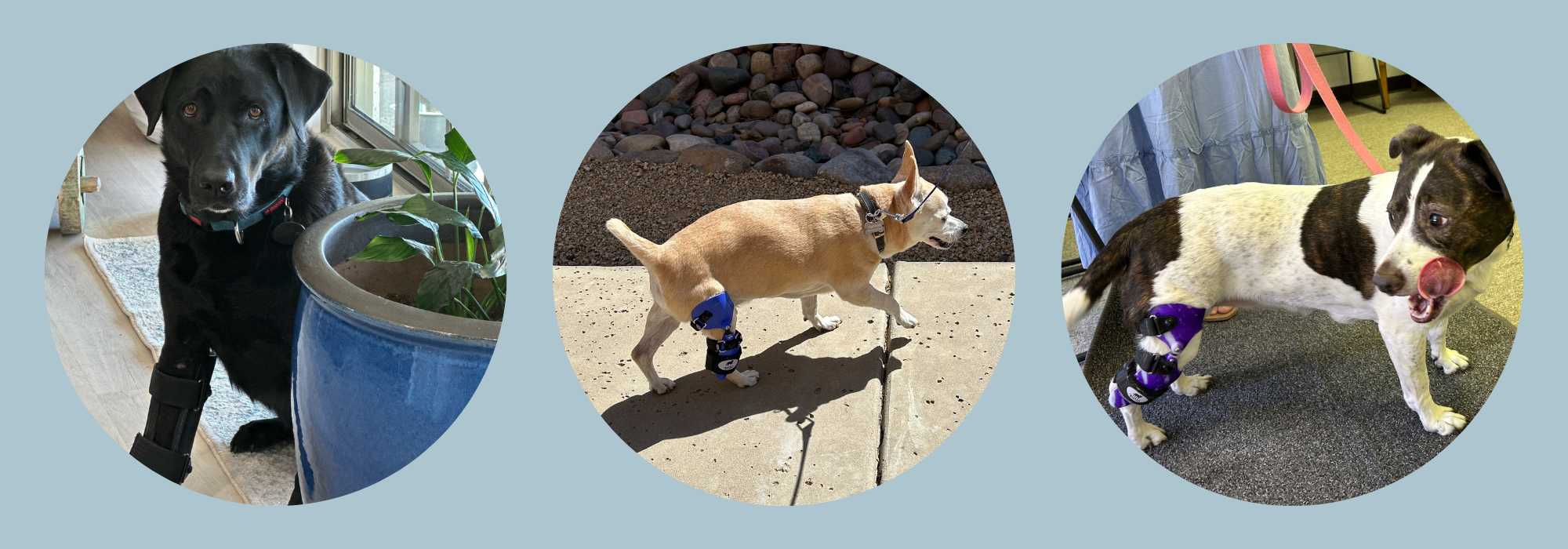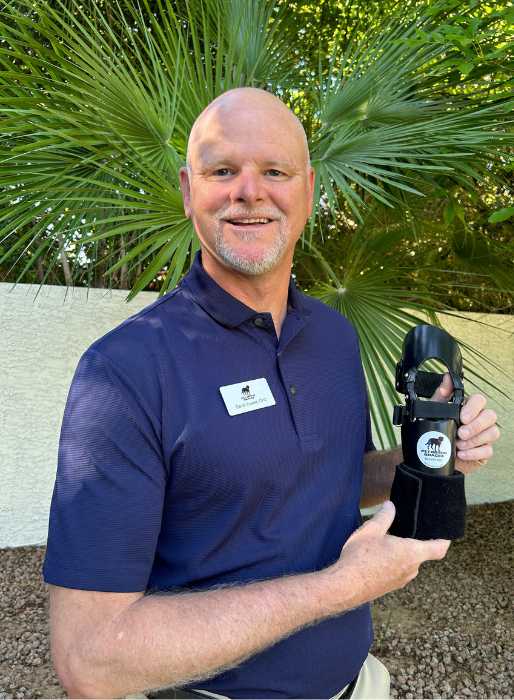Frequently Asked Questions
We’ve shared the most common questions we receive, but if you have another question, please submit it and we’ll respond.
General Questions
David Vowels, CPO
President of Pet Ortho Braces
Why is a custom brace used?
Custom orthotic bracing is used to treat injuries and other conditions. Braces provide support and stabilization to the dog’s affected limb, reducing pain and inflammation, and improving mobility and function.
Do dogs respond well to custom orthotic bracing? What’s the success rate?
In our practice, we have seen a high success rate in our patients when they follow proper protocol. The best results are when the device is properly designed and fitted to the dog’s individual needs and condition. Bracing can provide tailored support and stabilization to the dog’s affected limb, reducing pain and inflammation, and improving mobility and function..
Can my dog run and play with the brace on?
Not immediately. For optimal results, we encourage no off-leash activities outside the house for approximately 15 weeks. Dogs can take walks on a leash during the healing process.
How long does a dog have to wear an orthotic brace to be effective?
Custom bracing is designed based on the dog’s specific measurements, weight, and condition, and may include features such as adjustable straps, cushioning materials, and different types of joints or hinges. The custom fit and design can help ensure optimal support and comfort, which can improve the dog’s acceptance and compliance with the device.
Can orthotic bracing be used to treat a dog with torn CCL?
Yes, in fact, this is the most common use we see in our practice. A torn cranial cruciate ligament (CCL) is a common cause of hind limb lameness in dogs. The CCL is a ligament that connects the femur (thigh bone) to the tibia (shin bone) and helps stabilize the knee joint.
For those looking for a non-surgical option, a custom-made knee brace can be used to stabilize the joint, reduce pain and inflammation, and support the dog’s weight-bearing. The brace can also prevent further injury or damage to the joint and provide a non-surgical option for managing the condition.
Can orthotic bracing be used to treat a dog with deformities or birth defects?
Yes, custom orthotic bracing often helps provide stability to impacted joints which allows the dog to maintain an active healthy lifestyle.
I’ve heard that once a dog tears his CCL, they often tear the other side. Is that true? How can it be avoided?
Yes, this is true. Statistically, there is around a 60% chance of injuring the other side. However, this can be avoided by getting your dog into the brace quickly so they can use the affected limb and balance the weight better.
How does orthotic bracing work to treat dogs?
Orthotic bracing for dogs works by providing support, stability, and alignment to the affected joint or limb. Orthotic devices are designed to fit snugly and comfortably around the dog’s body, and they may be made of materials such as plastic, metal, foam, or fabric. The specific mechanism of action depends on the type of orthotic device and the condition it is intended to treat. For example, a leg brace may be used to support a dog’s weak or injured limb, prevent hyperextension or collapse of the joint, or improve weight-bearing and gait. A spinal brace may be used to stabilize the spine and support the dog’s posture in cases of intervertebral disc disease, spinal cord injury, or other spinal conditions.
Orthotic devices may also be customized to address specific anatomical or functional abnormalities, such as a limb length discrepancy, a rotated or twisted limb, or a misaligned joint. In such cases, the orthotic device can help realign the limb or joint and promote more normal movement patterns. Overall, the goal of orthotic bracing for dogs is to improve their mobility, reduce pain and inflammation, prevent further damage or injury, and enhance their overall quality of life.
Can orthotic bracing be used to treat a dog with hyperextension?
Yes, we use bracing to treat hyperextension issues frequently. A custom rigid brace can keep the joints in the correct position to allow the most function with the least pain.
Can orthotic bracing be used to treat a dog with fracture?
Yes, a brace can be used to treat a fracture. This should be closely monitored with your veterinarian and the professionals at Pet Ortho Braces.
About Our Services
Custom Braces for Dogs
Dogs can be treated with custom orthotic bracing for a variety of conditions. The most common use we see in our practice is as an alternative to surgery.
Braces for Other Animals
We provide custom bracing for all types of animals, from horses to goats and even cattle. The casting and fabrication process is similar to canine bracing.
Prosthetics
Our experienced team has 20+ years experience designing and fabricating custom designed prosthetics. With proper evaluation and casting, prosthetics can be designed for many types of animals.
Wheelchairs for Animals
Dog wheelchairs provide mobility assistance for pets dealing with hind leg weakness or paralysis. These carts are made to give dogs the support they need to live an active lifestyle. Pet Ortho Braces provides Walkin’ Wheels® featuring a highly durable, lightweight frame composed of aircraft-grade aluminum and simple snap buttons so that you can adjust the wheelchair as your pet grows. Foldable frame in the larger wheelchair sizes to save space when not in use.
Mobility Devices
Harnesses and slings are two types of common dog mobility devices that are often solid solutions for dogs that have trouble standing or that tire easily but have not yet lost all their mobility.
Have a Different Question?
Email us anytime
Or call 602-456-2511


